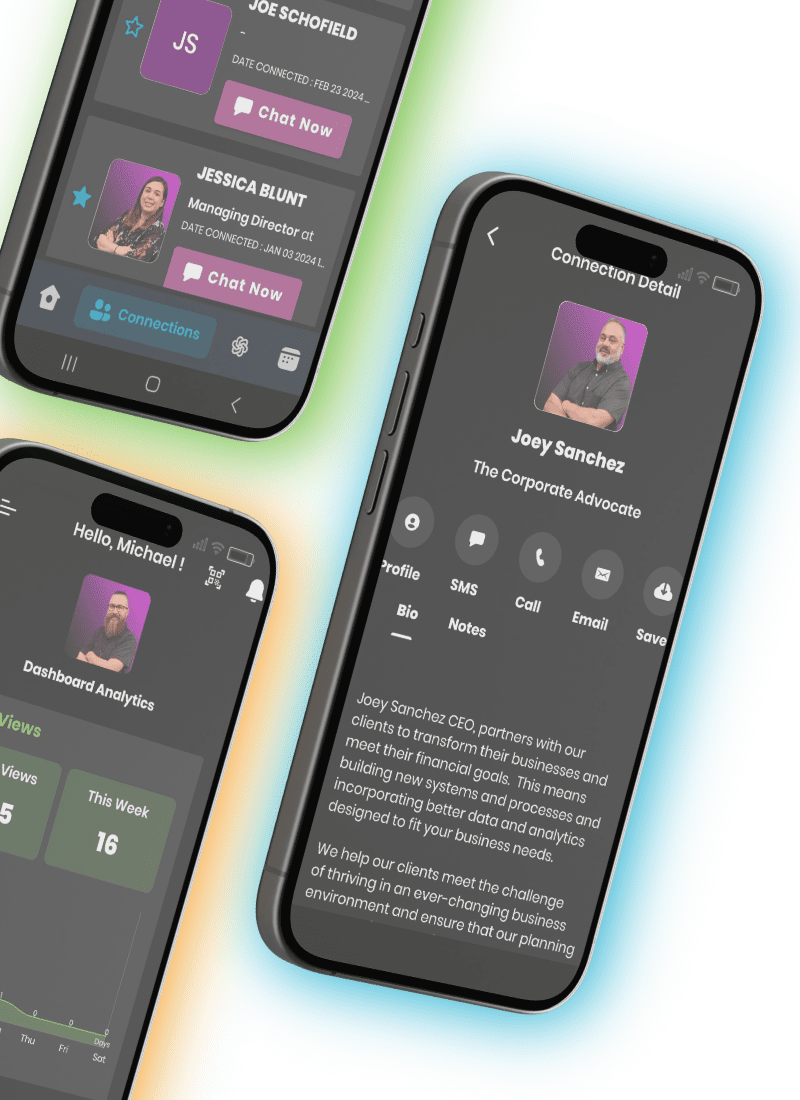Have you ever heard a story about a brand that stayed with you long after you encountered it? Perhaps it was a heartfelt advertisement about a family’s connection through a shared love of a particular product. Or maybe it was a social media post that resonated deeply with your own struggles and aspirations.
These powerful brand narratives tap into something fundamental within us: the human connection forged through storytelling. In today’s crowded marketplace, simply telling people about your product or service isn’t enough. You need to create a compelling story that captures their hearts and minds.
This blog post will delve into the power of storytelling for entrepreneurs and how you can craft a captivating brand narrative. We’ll explore the science behind why stories resonate with us, the essential elements of a strong brand story, and practical steps to bring your narrative to life.
By the end of this journey, you’ll be equipped to craft a brand story that not only informs but also inspires, fostering trust and connection with your target audience. So, get ready to unleash the storyteller within and unlock the true potential of your brand messaging!
The Essential Elements of a Captivating Brand Story
A captivating brand story isn’t just about throwing some interesting details together. It’s a strategic narrative that resonates with your audience and positions your brand as the solution to their needs. Here are the key ingredients that will make your brand story stand out:
1. Identify Your Core Values:
Your brand story should be built upon a foundation of strong core values. These values represent the essence of your brand and what it stands for. Understanding your core values allows you to craft a story that feels authentic and resonates with customers who share those beliefs.
2. Craft Your Brand Hero:
Every captivating story needs a hero – in this case, it’s your ideal customer! Think about the challenges your target audience faces and the problems your product or service solves. By personifying your ideal customer as the hero, you create a relatable narrative arc that your audience can connect with.
3. The Hero’s Journey:
Many successful stories follow a similar structure, known as the Hero’s Journey. This framework provides a blueprint for crafting a compelling narrative. Here are the key stages you can adapt for your brand story:
- Ordinary World: Introduce your hero in their everyday world, highlighting the challenges and frustrations they face.
- Call to Adventure: A catalyst emerges, disrupting the hero’s ordinary world and prompting them to take action. This could be a new need, a problem they can no longer ignore, or an opportunity for growth.
- Challenges & Trials: The hero embarks on a journey filled with obstacles and difficulties. These challenges represent the struggles your ideal customer faces in achieving their goals.
- Transformation: Through overcoming challenges, the hero undergoes a transformation, gaining new knowledge or skills.
- Return with the Elixir: Your brand’s product or service serves as the “elixir” that empowers your hero to overcome challenges and achieve their desired outcome. Show how your brand helps your hero transform and achieve success.
4. Weave in Your Brand’s Role:
Throughout your story, it’s crucial to showcase how your brand plays a pivotal role in the hero’s journey. Don’t be overly promotional; instead, subtly demonstrate how your product or service equips the hero with the tools and support they need to overcome obstacles and achieve their goals.
By incorporating these essential elements, you’ll craft a brand story that transcends mere product information. It will become a relatable narrative that resonates with your audience on an emotional level, fostering trust and positioning your brand as the key to achieving their desired outcome.
Examples of Storytelling in Action: How Entrepreneurs Captivate Their Audience
Stories breathe life into your brand. Here are some hypothetical examples of how entrepreneurs across industries could leverage storytelling to connect with their audience:
Example 1: The Eco-Conscious Clothing Brand
- Brand: “Evergreen Threads,” a clothing company focused on sustainable practices and ethical production.
Story: Evergreen Threads highlights the story of a young woman named Sarah who prioritizes eco-conscious living. The story follows Sarah on her journey to find stylish and sustainable clothing options, ultimately leading her to discover Evergreen Threads. The narrative showcases the challenges Sarah faces in finding ethical fashion choices and emphasizes how Evergreen Threads provides the solution – comfortable, stylish clothing made with eco-friendly materials and fair labor practices.
Example 2: The Local Coffee Shop
- Brand: “The Daily Grind,” a neighborhood coffee shop known for its warm atmosphere and community focus.
Story: The Daily Grind shares the story of a group of friends who use the coffee shop as their regular meeting spot. The narrative explores how The Daily Grind serves as a haven for connection, fostering friendships and supporting local artists through open mic nights. This story emphasizes the sense of community The Daily Grind cultivates, going beyond just serving coffee to become a central hub for social interaction.
Example 3: The Personal Branding Coach
- Brand: Sarah Jones, a personal branding coach who empowers individuals to build authentic online presences.
Story: Sarah shares the narrative of a client named David, a talented professional struggling to showcase his skills effectively online. The story follows David’s journey as he works with Sarah to develop a compelling personal brand strategy. The narrative highlights the transformation David undergoes, gaining confidence and attracting new opportunities through Sarah’s coaching. This story positions Sarah as an expert who can guide individuals in achieving their personal branding goals.
These examples showcase the power of storytelling in various contexts. By weaving narratives around relatable characters and challenges, entrepreneurs can connect with their audience on a deeper level, fostering trust and brand loyalty. They don’t just sell a product or service; they become part of the hero’s journey, offering the tools and support needed for success.
Crafting A Brand Story Step-by-Step: A Guide for Entrepreneurs
Now that you understand the power of storytelling and its key elements, let’s delve into the practical steps of crafting your own captivating brand narrative. Here’s a roadmap to guide you through the process:
1. Define Your Audience
This is the foundation of any successful brand story. Before crafting your narrative, you need a clear understanding of your target audience. Who are you trying to reach? What are their needs, aspirations, and pain points? By understanding your audience, you can tailor your story to resonate with their specific experiences and desires.
2. Brainstorming Your Story
Once you know your audience, it’s time to unleash your creativity! Brainstorming sessions are a fantastic way to develop your brand narrative. Here are some techniques to get you started:
- Mind Maps: Visually map out your brand values, target audience characteristics, and potential story ideas.
- Character Creation Exercises: Develop a profile for your ideal customer, including their background, challenges, and goals. This “hero” will be the central character in your brand story.
- Revisiting Your Brand Values: Reflect on your brand’s core values and how they can be woven into the narrative.
3. Refine and Polish Your Story
A compelling story is clear, concise, and emotionally impactful. Don’t be afraid to revise and refine your narrative multiple times. Here are some tips for polishing your story:
- Read it aloud: This helps identify awkward phrasing and ensures the story flows naturally.
- Get feedback: Share your draft story with trusted colleagues or potential customers for feedback.
- Focus on emotional connection: Aim to evoke emotions in your audience, whether it’s inspiration, hope, or a sense of belonging.
4. Finding Your Brand Voice
Your brand voice is the unique personality that shines through in your storytelling. It should be consistent across all communication channels and reflect your brand values. Consider the following:
- Formal or Informal? Determine the tone that best suits your brand and resonates with your audience.
- Conversational or Authoritative? Strike a balance between being approachable and establishing yourself as an expert.
- Unique and Memorable: Develop a voice that stands out from your competitors.
5. Bringing Your Story to Life
Now that you have a strong brand narrative, it’s time to share it with the world! Here are some effective channels to consider:
- Social Media: Utilize platforms like Instagram, Facebook, and Twitter to share bite-sized pieces of your story through captivating visuals and engaging captions.
- Blog Posts: Write in-depth blog posts that delve deeper into your brand story and showcase your expertise.
- Video Content: Create engaging video testimonials from satisfied customers or short explainer videos that incorporate your brand story.
- Customer Testimonials: Feature stories of real customers who have benefited from your product or service.
Meet the Enriched Contact Platform
Get Your Free SyncVIP Profile Now!
Sign up for your free VIP profile now and start making connections that matter.
Remember: Authenticity is key! Your audience craves genuine connections. Let your brand’s true personality shine through in your storytelling.
6. Track Your Results
Don’t just tell your story and walk away! Track how your brand storytelling efforts resonate with your audience. Monitor website traffic, social media engagement, and customer feedback to gauge the effectiveness of your narrative.
By following these steps and embracing the power of storytelling, you can craft a compelling brand narrative that connects with your audience on an emotional level, fosters trust, and positions your brand for success. Remember, storytelling is a journey, not a destination. Keep refining your narrative, experimenting with new formats, and engaging with your audience to build a brand story that truly resonates.
Bringing Your Story to Life: Engaging Your Audience Across Channels
You’ve crafted a captivating brand story – a narrative that encapsulates your brand’s values, connects with your target audience, and positions you as the solution to their needs. Now comes the exciting part: bringing your story to life and sharing it with the world!
In today’s digital landscape, there’s a multitude of channels where you can showcase your brand story and engage your audience. Here’s a breakdown of some effective options to consider:
1. Social Media: Bite-Sized Storytelling for Maximum Impact
Social media platforms like Instagram, Facebook, and Twitter are ideal for sharing bite-sized pieces of your brand story. Here’s how to leverage them:
- Captivating Visuals: People are drawn to visuals, so utilize high-quality images, infographics, and short videos to grab attention.
- Engaging Captions: Don’t just post a picture – tell a story! Use captions to draw viewers in, introduce your brand hero, and tease the bigger narrative.
- Interactive Features: Utilize features like Instagram Stories and Facebook Live to create interactive storytelling experiences, answer questions in real-time, and foster a sense of community.
Pro Tip: Remember to tailor your content to each platform. Keep Instagram posts concise and visually appealing, while Facebook allows for slightly longer narratives with discussions in comments. Leverage Twitter’s trending hashtags to connect your story with broader conversations.
2. Blog Posts: Deep Dives and Establishing Expertise
While social media excels at quick snippets, your blog is where you can delve deeper into your brand story. Here’s how to utilize blog posts effectively:
- Compelling Narrative: Craft engaging blog posts that showcase your brand story in detail. Introduce your brand hero, explore their challenges, and showcase how your product or service helps them overcome obstacles and achieve success.
- Industry Insights: Weave industry expertise into your storytelling. Share relevant data, case studies, or personal anecdotes that position your brand as a thought leader.
- Call to Action: Encourage interaction with your audience. Ask questions, invite comments, and offer valuable resources to establish trust and build relationships.
3. Video Content: Bringing Your Story to Life Visually
Video is a powerful storytelling tool that can evoke emotions and create a lasting impression. Here are some video storytelling strategies:
- Customer Testimonials: Feature stories of real people whose lives have been positively impacted by your product or service. Their genuine experiences add a powerful layer of authenticity to your brand narrative.
- Explainer Videos: Create short, informative videos that explain your brand story, showcase your product or service in action, and highlight the benefits your brand offers.
- Behind-the-Scenes Glimpses: Give your audience a peek into your company culture and the people behind your brand. This fosters a sense of connection and builds trust with your viewers.
Pro Tip: Keep your videos concise and engaging. Aim for shorter videos ideal for social media platforms, while longer, in-depth content can be hosted on your website.
4. Customer Testimonials: The Power of Real Stories
There’s no better way to validate your brand story than by showcasing the positive impact you have on real customers. Here’s how to leverage customer testimonials:
- Feature Success Stories: Share stories of customers who have overcome challenges or achieved success thanks to your product or service. Let their voices amplify your brand narrative.
- Social Proof and Reviews: Encourage customers to leave positive reviews on your website and social media platforms. Authentic customer experiences build trust and credibility.
- Case Studies: For B2B businesses, create in-depth case studies that explore how your brand helped another company achieve specific goals. Quantify the impact to showcase the value you deliver.
Remember: When featuring testimonials, prioritize authenticity. Let your customers speak in their own voice and share their genuine experiences.
5. Consistency is Key: Building a Cohesive Brand Narrative Across Channels
While you may tailor your content to each platform, ensure your brand story remains consistent across all channels. Here’s how to maintain a unified voice:
- Messaging Consistency: Reiterate your core brand values and key messages throughout your storytelling, regardless of the platform.
- Visual Identity: Maintain a consistent visual identity across your website, social media, and marketing materials. This creates a sense of brand recognition and builds trust.
- Brand Voice: Develop a unique brand voice that reflects your personality and resonates with your audience. Use this voice consistently across all your content.
By utilizing these strategies and choosing the channels that best suit your brand and audience, you can bring your brand story to life, fostering engagement, building trust, and achieving your business goals.
Unleash the Power of Storytelling: Captivate Your Audience and Build Your Brand
Remember, storytelling is an ongoing journey. As your brand evolves and your audience grows, so too should your brand narrative. Here are some tips to keep your storytelling fresh and engaging:
- Stay Relevant: Be mindful of current trends and industry developments. Subtly integrate these elements into your story to showcase your brand’s awareness and ability to adapt.
- Embrace Feedback: Pay attention to audience feedback and adapt your story accordingly. What resonates with them? Are there gaps in your narrative? Use audience insights to refine your story and ensure it continues to connect.
- Experiment with Formats: Don’t be afraid to experiment with new storytelling formats like podcasts, webinars, or interactive quizzes. This keeps your audience engaged and allows you to reach them in new ways.
- Continually Refine: Storytelling is an iterative process. Regularly review your brand story, identify areas for improvement, and refine your narrative to maintain its effectiveness.
By embracing these ongoing practices, you can leverage the power of storytelling to build a brand that resonates with your audience, fosters loyalty, and drives success in the long run. So, unleash your inner storyteller, share your brand’s unique narrative, and watch your business thrive!
Ready to craft a captivating brand story that ignites engagement and propels your brand forward?
SyncVIP can be your partner in this storytelling journey. With our platform, you can easily manage your social media presence, schedule engaging content, and track the impact of your brand narrative.
Sign up for a Free Basic Account today and see how SyncVIP streamlines your social media management and empowers you to tell your brand story effectively. For even more features designed to help influencers and businesses of all sizes elevate their storytelling game, check out our Influencer Plan.
Sign up for your free account or upgrade for just $5 per month now and unlock the full potential of your brand narrative with SyncVIP!















